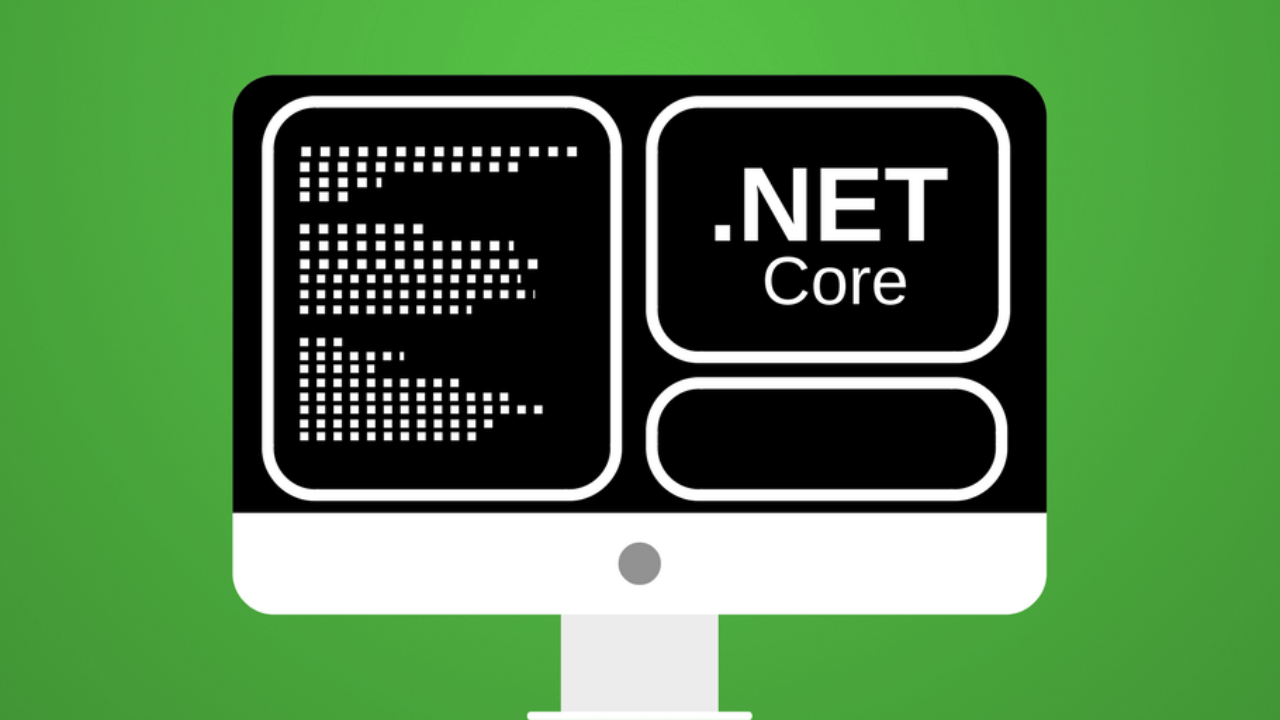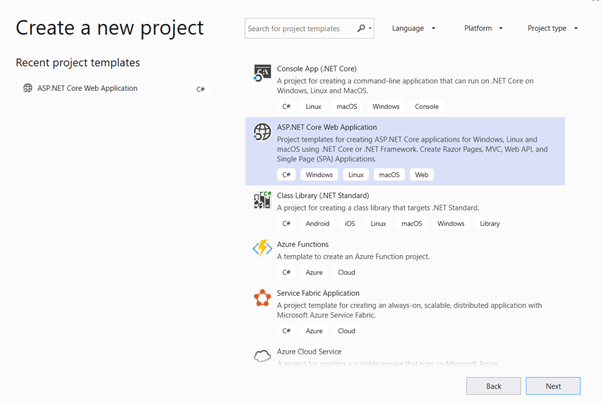Core is a cross-platform version of.NET, for building apps that run on Linux, macOS, and Windows. This site uses cookies for analytics, personalized content.
-->- Jun 22, 2020 Region ID. The REGIONID is a code that Google assigns based on the region you select when you create your app. Including REGIONID.r in App Engine URLs is optional for existing apps and will soon be required for all new apps. To ensure a smooth transition, we are slowly updating App Engine to use region IDs. If we haven't updated your Google Cloud project yet, you won't see a region ID for.
- To get started, open Visual Studio for Mac and click “New Project”. On the New Project screen, select.NET Core App ASP.NET Core Web App and follow the prompts to name your project. Edit Your HTML. After the project is created, you’ll edit the HTML to truly make it your own unique project.
In general, to deploy an ASP.NET Core app to a hosting environment:
MoneyWell Express was the mobile version of MoneyWell but was discontinued in early 2018 due to syncing issues.MoneyWell costs $72.60 but you can also.Pricing: $72.60 – Free Trial. Best mac tax software 2016 torrent.
- Deploy the published app to a folder on the hosting server.
- Set up a process manager that starts the app when requests arrive and restarts the app after it crashes or the server reboots.
- For configuration of a reverse proxy, set up a reverse proxy to forward requests to the app.
Publish to a folder
The dotnet publish command compiles app code and copies the files required to run the app into a publish folder. When deploying from Visual Studio, the dotnet publish step occurs automatically before the files are copied to the deployment destination.
Folder contents
The publish folder contains one or more app assembly files, dependencies, and optionally the .NET runtime.
A .NET Core app can be published as self-contained deployment or framework-dependent deployment. If the app is self-contained, the assembly files that contain the .NET runtime are included in the publish folder. If the app is framework-dependent, the .NET runtime files aren't included because the app has a reference to a version of .NET that's installed on the server. The default deployment model is framework-dependent. For more information, see .NET Core application deployment.
In addition to .exe and .dll files, the publish folder for an ASP.NET Core app typically contains configuration files, static assets, and MVC views. For more information, see ASP.NET Core directory structure.
Set up a process manager
An ASP.NET Core app is a console app that must be started when a server boots and restarted if it crashes. To automate starts and restarts, a process manager is required. The most common process managers for ASP.NET Core are:
- Linux
- Windows
Set up a reverse proxy
If the app uses the Kestrel server, Nginx, Apache, or IIS can be used as a reverse proxy server. A reverse proxy server receives HTTP requests from the Internet and forwards them to Kestrel.
Either configuration—with or without a reverse proxy server—is a supported hosting configuration. For more information, see When to use Kestrel with a reverse proxy.

Proxy server and load balancer scenarios
Additional configuration might be required for apps hosted behind proxy servers and load balancers. Without additional configuration, an app might not have access to the scheme (HTTP/HTTPS) and the remote IP address where a request originated. For more information, see Configure ASP.NET Core to work with proxy servers and load balancers.
Use Visual Studio and MSBuild to automate deployments
Deployment often requires additional tasks besides copying the output from dotnet publish to a server. For example, extra files might be required or excluded from the publish folder. Visual Studio uses MSBuild for web deployment, and MSBuild can be customized to do many other tasks during deployment. For more information, see Visual Studio publish profiles (.pubxml) for ASP.NET Core app deployment and the Using MSBuild and Team Foundation Build book.
By using the Publish Web feature or built-in Git support, apps can be deployed directly from Visual Studio to the Azure App Service. Azure DevOps Services supports continuous deployment to Azure App Service. Micro sd data recovery. For more information, see DevOps with ASP.NET Core and Azure.
Publish to Azure
See Publish an ASP.NET Core app to Azure with Visual Studio for instructions on how to publish an app to Azure using Visual Studio. An additional example is provided by Create an ASP.NET Core web app in Azure.
Publish with MSDeploy on Windows
See Visual Studio publish profiles (.pubxml) for ASP.NET Core app deployment for instructions on how to publish an app with a Visual Studio publish profile, including from a Windows command prompt using the dotnet msbuild command.
Internet Information Services (IIS)
For deployments to Internet Information Services (IIS) with configuration provided by the web.config file, see the articles under Host ASP.NET Core on Windows with IIS.
Host in a web farm
Perspective journal app for mac and iphone. For information on configuration for hosting ASP.NET Core apps in a web farm environment (for example, deployment of multiple instances of your app for scalability), see Host ASP.NET Core in a web farm.

Host on Docker
For more information, see Host ASP.NET Core in Docker containers.
Perform health checks
Use Health Check Middleware to perform health checks on an app and its dependencies. For more information, see Health checks in ASP.NET Core.
Additional resources
In general, to deploy an ASP.NET Core app to a hosting environment:
- Deploy the published app to a folder on the hosting server.
- Set up a process manager that starts the app when requests arrive and restarts the app after it crashes or the server reboots.
- For configuration of a reverse proxy, set up a reverse proxy to forward requests to the app.
Publish to a folder
The dotnet publish command compiles app code and copies the files required to run the app into a publish folder. When deploying from Visual Studio, the dotnet publish step occurs automatically before the files are copied to the deployment destination.
Folder contents
The publish folder contains one or more app assembly files, dependencies, and optionally the .NET runtime.
Installing Firefox on Mac. Visit the Firefox download page in any browser (for example, Apple Safari). It will automatically detect the platform and language on your computer and recommend the best version of Firefox for you. Click the download button to download Firefox. Jul 03, 2020 Firefox 78.0.1 - Fast, safe Web browser. Download the latest versions of the best Mac apps at safe and trusted MacUpdate. Download firefox app for mac. Download Mozilla Firefox, a free Web browser. Firefox is created by a global non-profit dedicated to putting individuals in control online. Get Firefox for Windows, macOS, Linux, Android and iOS today!
A .NET Core app can be published as self-contained deployment or framework-dependent deployment. If the app is self-contained, the assembly files that contain the .NET runtime are included in the publish folder. If the app is framework-dependent, the .NET runtime files aren't included because the app has a reference to a version of .NET that's installed on the server. The default deployment model is framework-dependent. For more information, see .NET Core application deployment.
In addition to .exe and .dll files, the publish folder for an ASP.NET Core app typically contains configuration files, static assets, and MVC views. For more information, see ASP.NET Core directory structure.
Set up a process manager
An ASP.NET Core app is a console app that must be started when a server boots and restarted if it crashes. To automate starts and restarts, a process manager is required. The most common process managers for ASP.NET Core are:
- Linux
- Windows

Set up a reverse proxy
If the app uses the Kestrel server, Nginx, Apache, or IIS can be used as a reverse proxy server. A reverse proxy server receives HTTP requests from the Internet and forwards them to Kestrel.
Either configuration—with or without a reverse proxy server—is a supported hosting configuration. For more information, see When to use Kestrel with a reverse proxy.
Proxy server and load balancer scenarios
Additional configuration might be required for apps hosted behind proxy servers and load balancers. Without additional configuration, an app might not have access to the scheme (HTTP/HTTPS) and the remote IP address where a request originated. For more information, see Configure ASP.NET Core to work with proxy servers and load balancers.
Use Visual Studio and MSBuild to automate deployments
Deployment often requires additional tasks besides copying the output from dotnet publish to a server. For example, extra files might be required or excluded from the publish folder. Visual Studio uses MSBuild for web deployment, and MSBuild can be customized to do many other tasks during deployment. For more information, see Visual Studio publish profiles (.pubxml) for ASP.NET Core app deployment and the Using MSBuild and Team Foundation Build book.
By using the Publish Web feature or built-in Git support, apps can be deployed directly from Visual Studio to the Azure App Service. Azure DevOps Services supports continuous deployment to Azure App Service. For more information, see DevOps with ASP.NET Core and Azure.
Publish to Azure
See Publish an ASP.NET Core app to Azure with Visual Studio for instructions on how to publish an app to Azure using Visual Studio. An additional example is provided by Create an ASP.NET Core web app in Azure.
Publish with MSDeploy on Windows
Deploy Core App On Mac Pc
See Visual Studio publish profiles (.pubxml) for ASP.NET Core app deployment for instructions on how to publish an app with a Visual Studio publish profile, including from a Windows command prompt using the dotnet msbuild command.
Internet Information Services (IIS)
Deploy Core App On Mac Computer
For deployments to Internet Information Services (IIS) with configuration provided by the web.config file, see the articles under Host ASP.NET Core on Windows with IIS.
Host in a web farm
For information on configuration for hosting ASP.NET Core apps in a web farm environment (for example, deployment of multiple instances of your app for scalability), see Host ASP.NET Core in a web farm.
Apr 07, 2017 macOS has a feature called “Gatekeeper” designed to lock down your Mac, forcing it to only run Apple-approved software by default. But a Mac is locked down in the same way Android is locked down–you’re still free to run any application you want. Gatekeeper works a little differently depending on which version of macOS you’re running. How to unblock software mac.
Deploy Core App On Mac Windows 10
Host on Docker
For more information, see Host ASP.NET Core in Docker containers.
Additional resources
Streaming is available in most browsers,
and in the WWDC app.
Discover how to deploy Core ML models outside of your app binary, giving you greater flexibility and control when bringing machine learning features to your app. And learn how Core ML Model Deployment enables you to deliver revised models to your app without requiring an app update. We'll also walk you through how you can protect custom machine learning models through encryption, and preview your model performance in Xcode. For more information on working with Core ML, including bringing over models trained in environments like TensorFlow and PyTorch, we also recommend watching 'Get your models on device using Core ML Converters.”
Resources
Related Videos
WWDC 2020
- DownloadArray